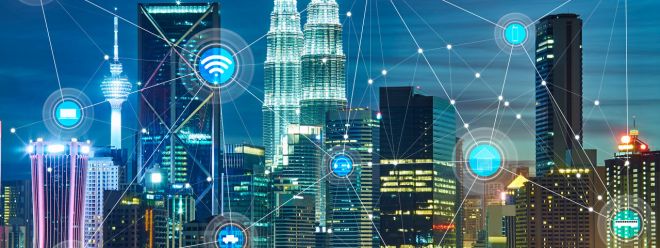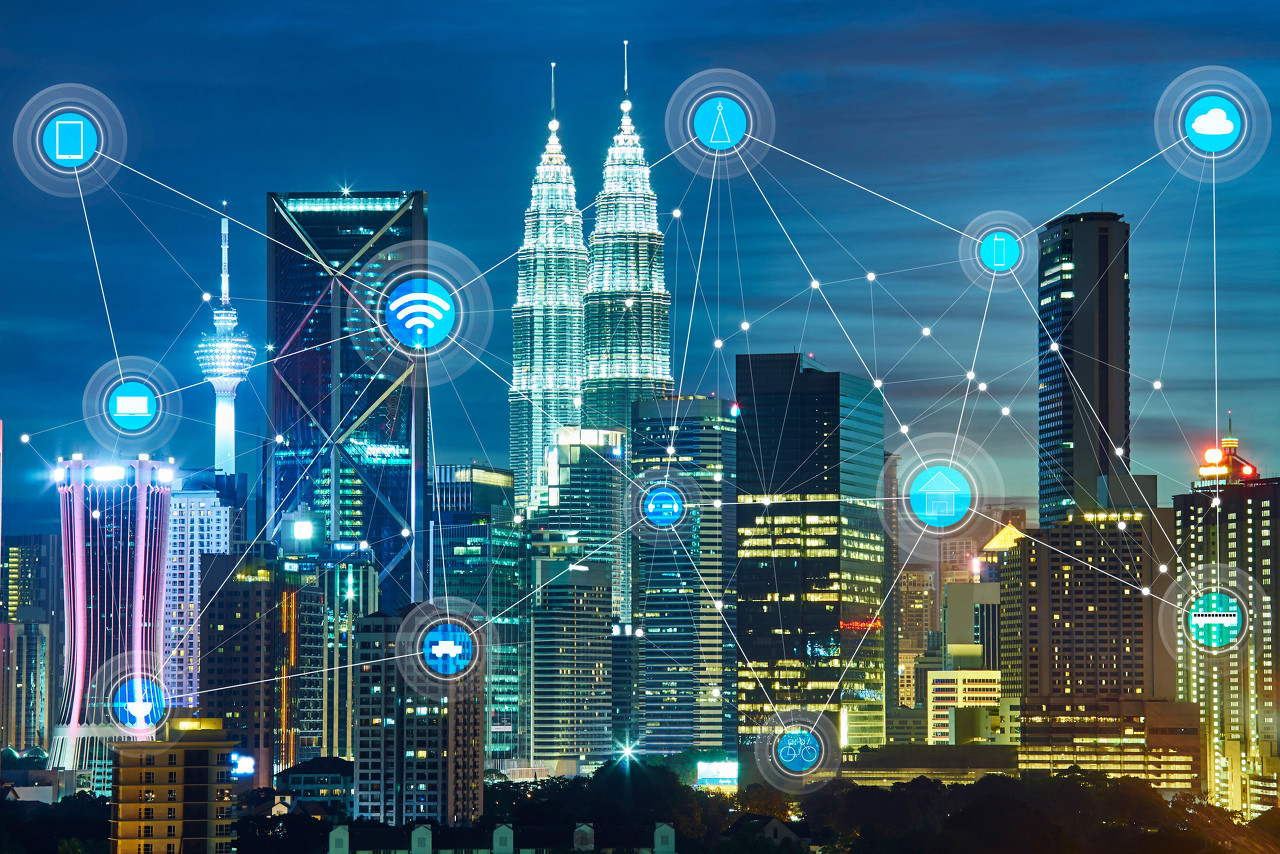The Role of LoRaWAN and IoT in Optimizing Asset Management

The role of the Internet of Things (IoT) and LoRaWAN in asset management is truly limitless. This is evidenced by the results that asset tracking IoT solutions can bring to manufacturing companies and other businesses. By reducing the non-operational time of assets, businesses can improve their bottom line. Asset management experts now play a vital role in maintaining adequate asset uptime. They are responsible for tracking asset location, maintenance history, asset optimization, intelligent financial decisions, business processes and other important data. This information is used to optimize utilization of assets and prevent downtime. Using asset tracking IoT devices, which is easier, requires less manpower, can improve operational efficiency and reduce operating costs.

Advantages of LoRaWAN Networks
LoRaWAN can be used to monitor environmental conditions in inventory. For example, businesses can use IoT-enabled asset management sensors to track temperature, humidity and air quality. This information can be used to increase the efficiency of the HVAC system and prevent equipment failure or adjust conditions to best suit asset health.
- Long Range and Coverage: Its coverage is up to 15 km in LOS, unmatched by any other communication protocol including Wi-Fi, cellular, etc.
- Low power consumption: LoRa offers an ultra-low power radio, ideal for devices that need to last a decade or more on a single charge.
- Low-cost hardware: LoRaWAN infrastructure and its end-device radios are more cost-effective than other networks. Additionally, various open source versions of infrastructure, such as gateways, are being created, further reducing expenses.
- High Capacity: A single LoRa gateway may connect thousands of NB IoT devices and common applications.
- Cost: Compared to a simple Wi-Fi connection, LoRaWAN is less time-consuming and can reduce service costs.
LoRaWAN asset management solutions can improve asset performance and uptime, reduce associated operating costs, and enhance asset value preservation. Asset tracking software helps asset managers proactively gather data analytics to enhance monitoring and maintenance of their IoT-enabled assets, which translates into higher productivity and profits. LoRaWAN asset management also enables asset managers to analyze data from physical assets and use it to make decisions about their business model. Since these analytics tools reduce operating costs, they are a good investment for businesses.
IoT-based asset tracking benefits
#1: Reduce operating costs
Companies can use IoT management systems to improve their manufacturing supply chains. With this asset lifecycle management technology, businesses can track individual items and optimize equipment efficiency. With information on asset status, asset details, the current location of items, overall equipment efficiency and possible asset failure, managers can optimize production, reduce waste, increase productivity and increase revenue. For example, automated warehouse inventory systems can use predictive analytics to prevent the risk of out-of-stocks.
IoT asset tracking systems reduce overall maintenance costs. Asset tracking IoT platforms can also improve worker safety and satisfaction, resulting in savings on insurance premiums. Additionally, it provides actionable insights to improve processes. With real-time data, these manufacturers can maximize the ROI of their technology investments and establish an appropriate regulatory framework. This is why IoT sensors attached to assets are ideal for asset managers to ultimately improve operational efficiency and establish automated tracking.
#2: Improve Visibility
By leveraging an IoT-based central monitoring system for asset management, companies can monitor equipment performance and equipment efficiency at all times. By analyzing this data, operators can improve maintenance schedules and identify problem areas before they occur and affect manufacturing cells. In addition to this, IoT-based asset tracking provides real-time visibility into managed assets. By tracking asset performance, maintenance managers can accurately identify critical areas for repair and calibration and create asset tracking plans. In addition, IoT can also enable efficient asset management. With IoT solutions, managers can also identify areas for improvement in their operational cycle times.
#3: Improved Workflow
IoT can automate the inventory and transfer of assets in the supply chain. This technology helps prevent human error, allowing you to improve asset management without additional labor. With connected devices, you will be able to measure risk and predict maintenance needs. With the right IoT-based asset management, you can also avoid significant losses due to lost assets. The system is also capable of measuring and evaluating asset condition.
IoT can also help improve employee well-being. A team that feels well supported is less likely to feel pressured to manage small details. For example, smart GPS units can be used to monitor fleet vehicles and schedule maintenance, reducing human error, while workers will have time to check for more important issues.
Another example of how IoT asset optimization technology can improve asset management workflows is the automatic monitoring of underutilized assets. Without automation, managers must manually check asset lifecycles all the time. This can be expensive and time-consuming, and IoT-enabled asset management systems will simplify these tasks. Your employees can focus on higher-value assets, and IoT can help you save time and money. Managing and maintaining assets is a complex and time-consuming process. IoT technology is helping to make this task more efficient, as IoT devices can quickly generate data that can be sent to Excel spreadsheets or artificial intelligence analysis programs. IoT sensors track the condition of all assets, including valuable or regulated assets. IoT-based asset management solutions enable preventive maintenance and comprehensive asset visibility to increase productivity and profits while reducing costs.
Asset Management Solutions: Key Considerations
Before implementing an IoT-enabled asset management solution such as LoRaWAN, there are some key things to consider:
- What is the main physical device used? These devices need to be able to connect to the internet and communicate with asset management software.
- What asset tracking IoT use cases will be implemented? There are many different options to choose from, so it's important to choose the one that best suits your needs.
- What predictive maintenance capabilities will be included? Predictive maintenance helps reduce downtime and improve asset utilization.
By considering these factors before implementing an IoT-enabled asset management solution, you can ensure that it is suitable and successful for your specific needs. Traditional asset management solutions don't make the tracking process any easier. The problem is that they can't track assets in real time and have poor accuracy. IoT asset management uses embedded sensors to monitor assets in real-time and deliver complete information directly to their mobile devices. Using IoT technology in asset management to combine data with intelligence allows companies to streamline processes and eliminate theft and theft.
Ensuring IoT Security
IoT has become an increasingly popular asset management technology, and while it is a valuable tool, it also presents some security risks. Unsecured devices (called shadow devices) are vulnerable to cyber attacks because they have no authentication or authorization. Shadow devices are also susceptible to malware infection and are part of botnets. Here's why you only need to buy smart devices from trusted suppliers:
- Choose devices with world-recognized certification protocols.
- If LoRaWAN Asset Management is selected as the technology, the supplier is selected through the LoRa Alliance, so the product conforms to global standards.
- Choose carrier-grade gateways for the lowest total cost of ownership.
Improve efficiency
Asset management solutions can help increase the efficiency of any business or organization. By tracking assets, businesses can ensure they always know their whereabouts and can take action if lost or stolen. Additionally, by using IoT sensors and applications, businesses can better track inventory levels and monitor the movement of assets within a facility. This helps improve overall efficiency and reduce costs.
One of the greatest benefits of IoT asset management is that it eliminates human intervention and allows the system to transmit data automatically. It can also alert service technicians to repair equipment that requires urgent attention. In addition, the system can also send work orders to field engineers to inspect and repair machines, reducing downtime. Additionally, the system will allow asset managers to reduce costs and increase productivity by eliminating manual processes.